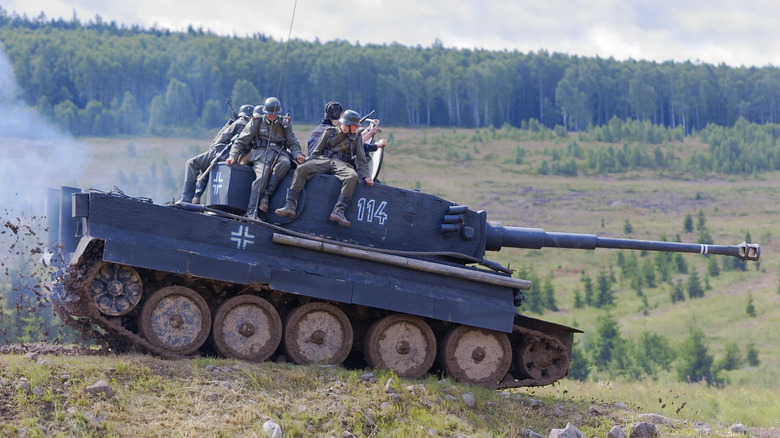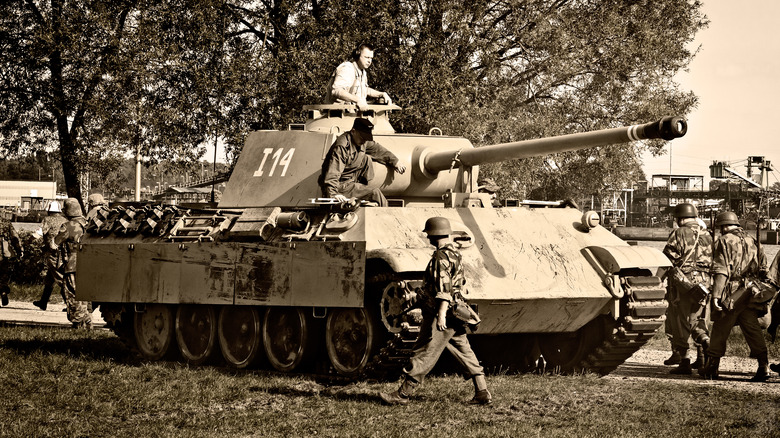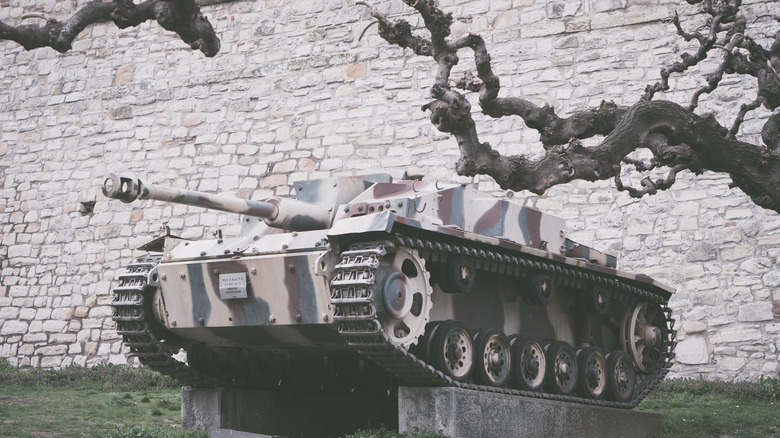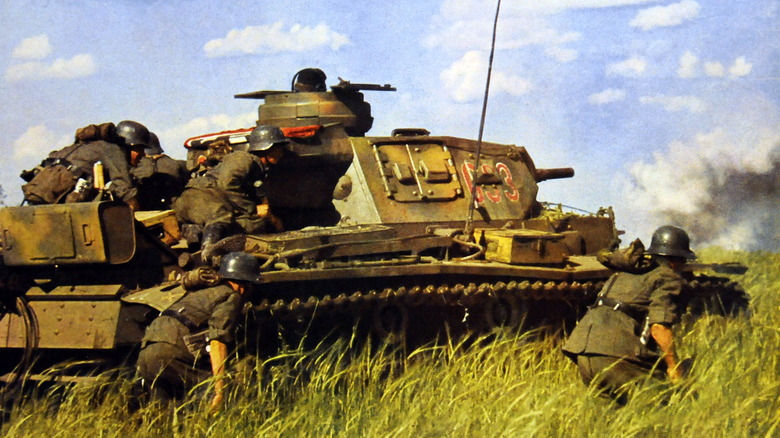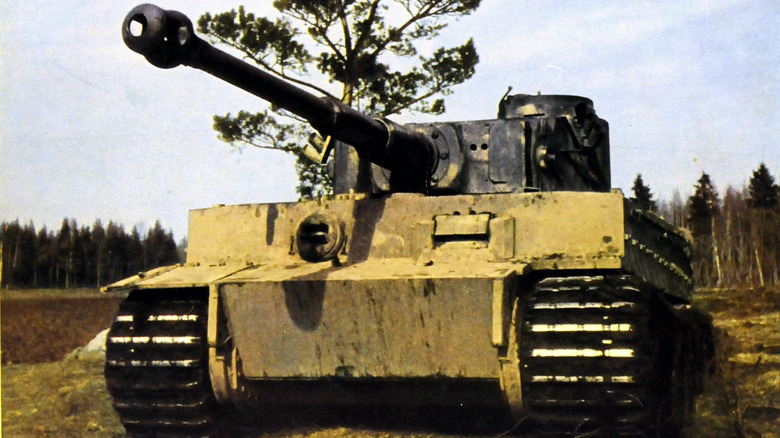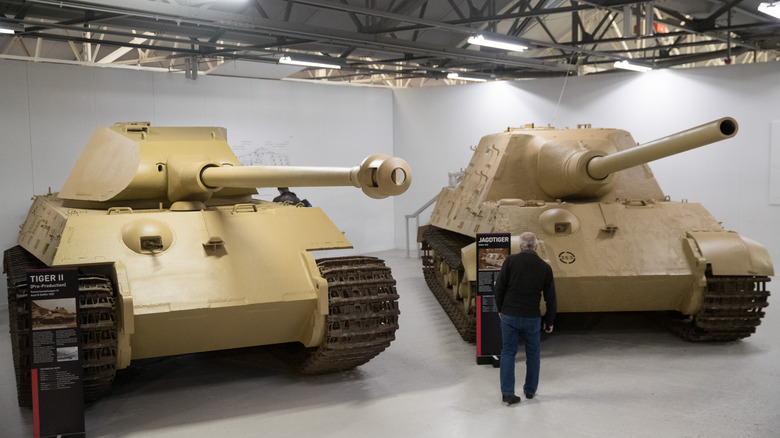The 5 Most Dangerous Axis Tanks Of WWII
World War II had a plethora of different tank designs that evolved as the war went on. With each new area of engagement, militaries had to adapt to the conditions, from the sands of North Africa to the jungles of Southeast Asia. However, the most dangerous tanks from the Axis powers were indisputably the monster tanks from Germany. They were huge, they were intimidating, and they packed a giant-sized punch.
The best-known of these were among the most legendary tanks from the entire war. Wrapped in thick armor, brimming with new technologies of that period, and sporting guns that would break record after record for firepower, these land behemoths were central to the ground war across Europe until Germany inevitably fell in 1945.
The Germans produced a lot of tanks over the course of the war, from light to heavy and everything in between, but the five most dangerous were in a league of their own.
Panther
The Panther was the tank Germany designed after trying to invade Russia in 1941 and finding out that the Russians had superior hardware in the T-34. Hitler later ordered his military to produce something that could compete with the T-34, and what resulted was the Panther. However, the finished design was actually larger than the T-34 and had an upgraded suspension, wider tracks for more stability, and a 75mm gun that was among the most powerful in World War II. It also featured an MG 34 machine gun for use when enemy infantry got close.
The design of the Panther is part of what made it successful. It had a sloped front that provided superior protection, as the sloping metal armor meant there was effectively more metal between an impact and the soldiers inside. Roughly 6,000 were deployed between 1943 and 1945, but – fortunately for the Allies — the Panther was not without a few problems. Perhaps the most significant among these issues was a tendency to overheat, which would allow gas or oil leaks to start a fire in the engine, along with a final drive assembly that could fail in just 150 kilometers.
Stug III
The Stug III was a fully-tracked assault vehicle whose low profile and wide-body design made it harder to hit by the Allies. It was also the most produced tank by the Germans, with over 10,000 made over the course of the war. Early models had a short-barrel gun — compared to other tanks of the era — that could fire a multitude of different rounds depending on whether they were fighting other tanks or infantry. Rounds could even be fitted that were designed to provide cover with smoke. Later in the war, the Germans elongated the gun for better accuracy at longer range.
The Stug III, however, had a lot of vulnerabilities, which meant the Germans often used the tank in tandem with infantry. The sides, back, and roof had fairly weak armor compared to other tanks in the war, and early versions didn't have a machine gun for anti-infantry like most other tanks. However, Germany had already realized that having a tank amongst the infantry was great for morale, as the soldiers could more easily pivot to defensive positions when Allied soldiers got too close.
Panzer III
The Panzer III was a medium tank that didn't have the firepower of other tanks but was still incredibly effective earlier in the war. Rather than having a big gun like the ones on heavier tanks, it had a 37mm antitank gun and two machine guns. However, instead of being in the 30-ton range like the heavy tanks, it was just 20 tons, which allowed it to be much more nimble and reach speeds as high as 25 miles per hour. As Allied tanks evolved, so did the Panzer III, which was upgraded to a 50mm gun by 1941.
However, despite these improvements, it was still outmatched in many ways by the Soviets' new tank — the T-34. It had a much stronger 76.2mm gun, a sloping hull that made it harder for other tanks to hit, and was nearly as fast as the Panzer III. The Germans quickly realized they were outclassed and took the Panzer III off the Eastern front. However, by then there had been more than 5,600 produced, making it one of the most produced and utilized tanks in the war.
Tiger I
With the Panzer III on the back burner after the Germans realized it was no match for the Soviets T-34, Germany needed a tank that could match its firepower and one that could exceed it. To match the T-34, German engineers came up with the Panther. To take things to the next level, they developed the Tiger I, a heavy tank unlike the world had seen before.
Weighing 45 tons — most heavy tanks are in the 30-ton range – and equipped with extremely thick armor, the Tiger I was truly a force to be reckoned with. All of that armor was supported by a huge 88mm gun that was so potent that when they shot some enemy tanks, the ordinance would go through the enemy tank to the other side.
All of that armor and power made it one of the most feared tanks in the war. It was said that it could destroy an enemy tank from over a mile away. It wasn't without its problems, though. Its systems were more complicated than other tanks, meaning maintenance was much more problematic. They also didn't do well in mud or snow, putting them at risk, especially on the Eastern front. Still, the Tiger I was a monster of a tank and was legendary during World War II.
Tiger II
The Tiger I was already a formidable tank, but when the Nazis upgraded it to the Tiger II (also known as the Royal Tiger), it was truly the king of all tanks. Instead of weighing 45 tons like the Tiger I, it weighed nearly 75 tons. It had the same devastating 88mm gun, but the Tiger II's gun barrel was longer, adding velocity to its shots. Most of the weight, by far, was added while beefing up the armor. At the front of the tank, the armor was 18 centimeters thick. Tanks on the Allied side watched as their ordinance bounced off of the hull of the Tiger II.
The problem with these super-heavy tanks is how to retrieve them when they break down. For the Tiger II, only another Tiger tank could physically tow it away. However, the main problem with the Tiger II was that it was a complex machine that crews needed training to operate. However, at that point in the war in 1944, Germany was running low on experienced tank crews. As a result, there were less than 500 Royal Tigers built, but it remains one of the most legendary tanks from that era.
